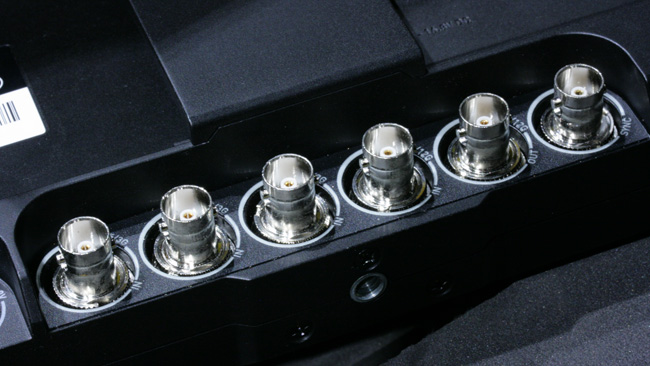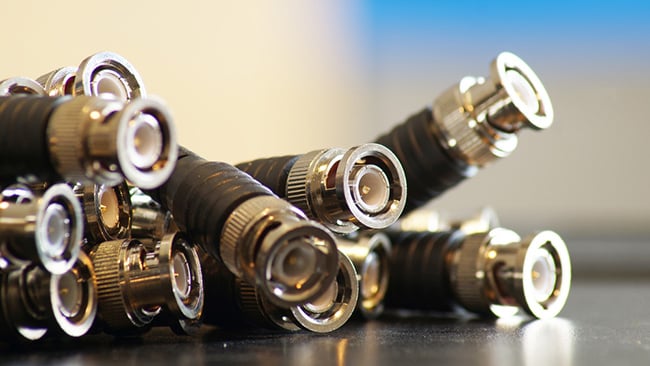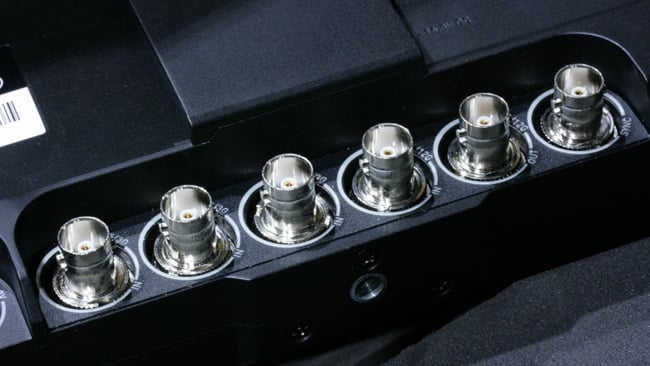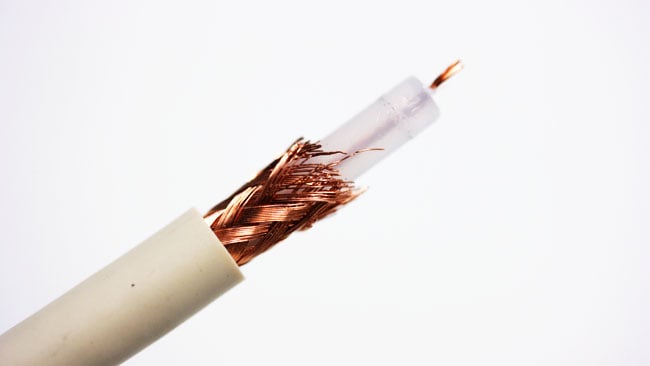
 The link that binds us. Choosing the right cable is important
The link that binds us. Choosing the right cable is important
For all the industry’s increasing technological sophistication, it still very much relies on bits of shielded wiring to join it all together. Choosing the right cable for the job might not be quite as simple as it first seems.
Sometimes, it's a really good idea to spend lots of money on high-quality, low-loss cables so that our precious pictures or sounds aren't affected by technical problems. Other times, it's a good idea to enthusiastically display the proverbial middle finger to snake-oil salesmen who are trying to make us spend ludicrous amounts of money on cables which have been anointed with rare oils on the basis that they'll make everything sound wonderful. Often, it's easy to tell the difference between these two situations, as people telling us to use low-loss coaxial cables for long-distance runs are generally broadcast engineers, whereas people trying to charge us a day's wages for an audio cable are generally grinning salesmen in sharp suits.
Still, it's worth being aware of some of the science behind this, so that we can figure out when we need a nice new BNC cable and when we can get away with an old one recovered from a TV studio that was installed in the 1980s. To understand this, we need at least an idea of the concept of impedance. Controlling impedance is the entire purpose of coaxial cable and other cable types, such as twisted pairs.
Impedance issues crop up all over the place in modern information technology, from BNC cables carrying SDI pictures to USB cables carrying, well, almost anything. Impedance is measured in ohms, the same units as resistance, and if we don't ensure that everything in a system is using parts of the right impedance (75 ohms for SDI cables, 600 ohms for audio cables, etc) we risk distorting the signal so that real-world problems occur. We'll be skipping over most of the mathematics, but we will be explaining why we have coaxial cable and BNC connectors in the first place.

The white plastic spacer around the centre of these connectors is designed to help match impedance
Most of us have a basic understanding of how electricity travels down conductors based on our schooling: connect a lightbulb to a battery with two pieces of wire and the light bulb comes on. We can send information down the wire by turning the electricity on and off and the faster we can do that, the more information we can send. The problem occurs when we try to send lots of information (such as a 4K high-frame-rate picture at 12 bits per pixel) down a wire and we have to turn the electricity on and off really incredibly quickly. Then, problems occur that aren't usually obvious.
A lesson on impedance
So, here begins the lesson on impedance, which we'll try to cover in three paragraphs.
First, let's think back to another bit of school physics: we know that we can make an electromagnet by wrapping some wire around an iron nail. In fact, wires with electricity flowing down them make magnetic fields even if we don't wrap them around a nail, a property called inductance. When we send electricity down a wire, some of the energy goes into creating that magnetic field and is stored in it.
Secondly, cables also have capacitance. A capacitor can store electrical energy like a spring stores mechanical energy. We can make one simply by taking two plates of metal and separating them with something non-conducting. Connect the terminals of a battery to the plates, and energy is stored by electrons simply hanging around in the space between them. Similarly, almost all cables have a signal wire and a ground wire. Placing them close together, as they usually are, creates a capacitor.
In a real world cable, the inductance and capacitance are tiny. Even so, when we first send electricity down the wire, there is a tiny instant where that inductance and capacitance is being charged up (strictly, it forms an LC filter), which requires energy. When we say that a cable has a 75-ohm impedance, we're stating that the amount of energy used to “charge up” that cable is the same as would be drawn by a 75-ohm resistor connected across the cable. Impedance, therefore, isn't a resistance, but it behaves like one for a tiny instant of time until the electricity gets to the far end and the cable is fully charged. That's impedance.
The problem is what happens when the electricity reaches the end of the cable and whatever device we were sending it to — the SDI input port on a camera, perhaps. If by comparison, that device doesn't behave as if it were a 75-ohm resistor, the amount of energy flowing will suddenly change — an impedance mismatch. What happens next is complicated and I'm simplifying cruelly, but the effect is that when the signal hits the far end of the cable and finds an impedance mismatch, it can reflect and go back to the source. It happens when two people hold a rope and one flicks a ripple into it. The ripple bounces back off the far end because there's nowhere to go.

The cable is designed to keep the outer screen a constant distance from the central conductor
Now, when we're sending slow signals, like audio, which only change a few thousand times per second, that's not a big problem. Electrical signals travel at the speed of light, so unless the cable is incredibly long (thousands of metres) the amount of delay on the reflection is so tiny that it's barely detectable. On very fast signals (twelve-gigabit SDI, anyone?) things can be a lot more critical, because the electricity can switch on and off in the time it takes for any particular pulse to reach the end and bounce back, so the signal can be terribly corrupted. On very short runs we can get away with it because even fast signals aren't that fast compared to the speed of light, which answers at least one common question: can I use old patch cables for SDI?
Often, yes. It's actually quite surprising how often impedance really doesn't make much difference, mainly because of very clever electronics in SDI devices which actively try to make things work. Even so, manufacturers do their best. Cables control their capacitance by using special materials for the separator between the core and the screen of coax, and by controlling the size and spacing of both the core and screen and all of the parts in the connector. Ultimately, we must ensure that the cable, the connectors and the electronics at both ends all present the same impedance: roughly put, they all draw energy at the same rate so that reflections don't spoil our day.
Title image courtesy of Shutterstock.
Tags: Production


Comments